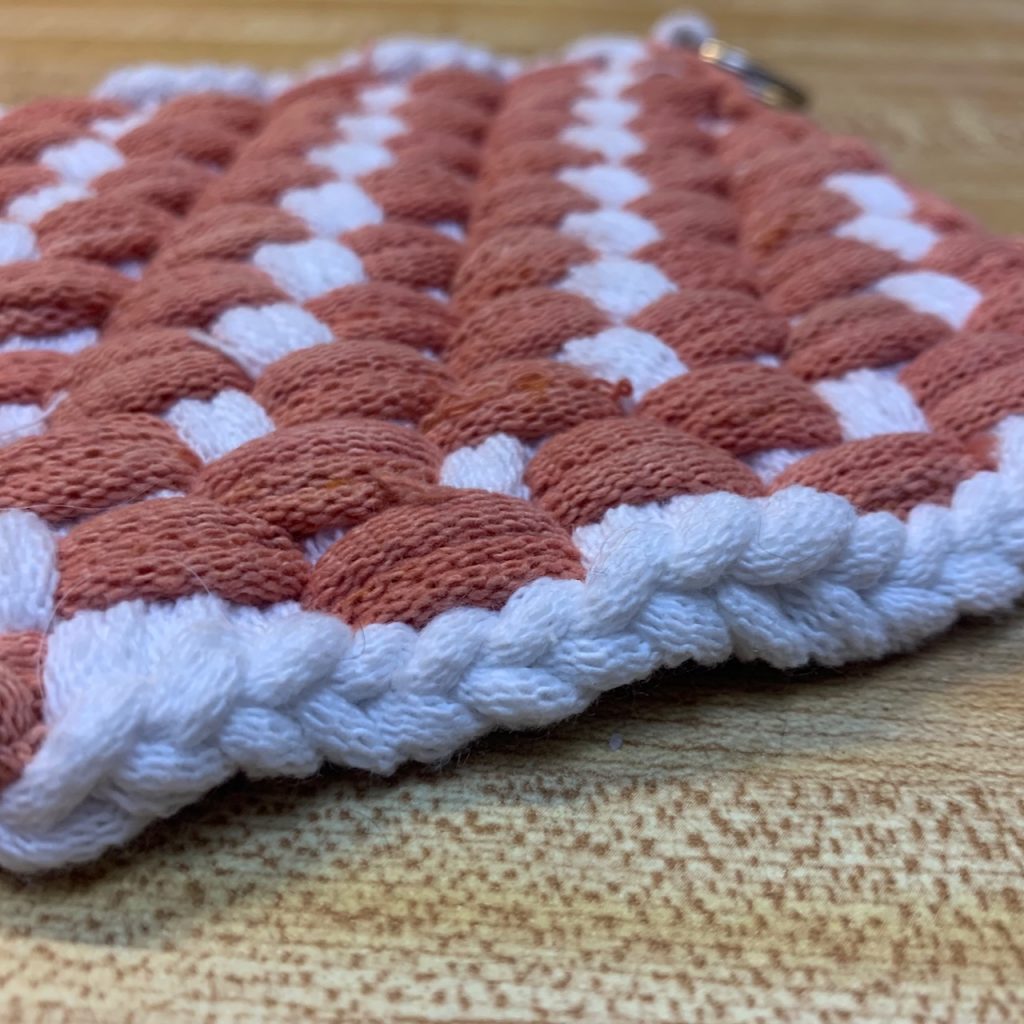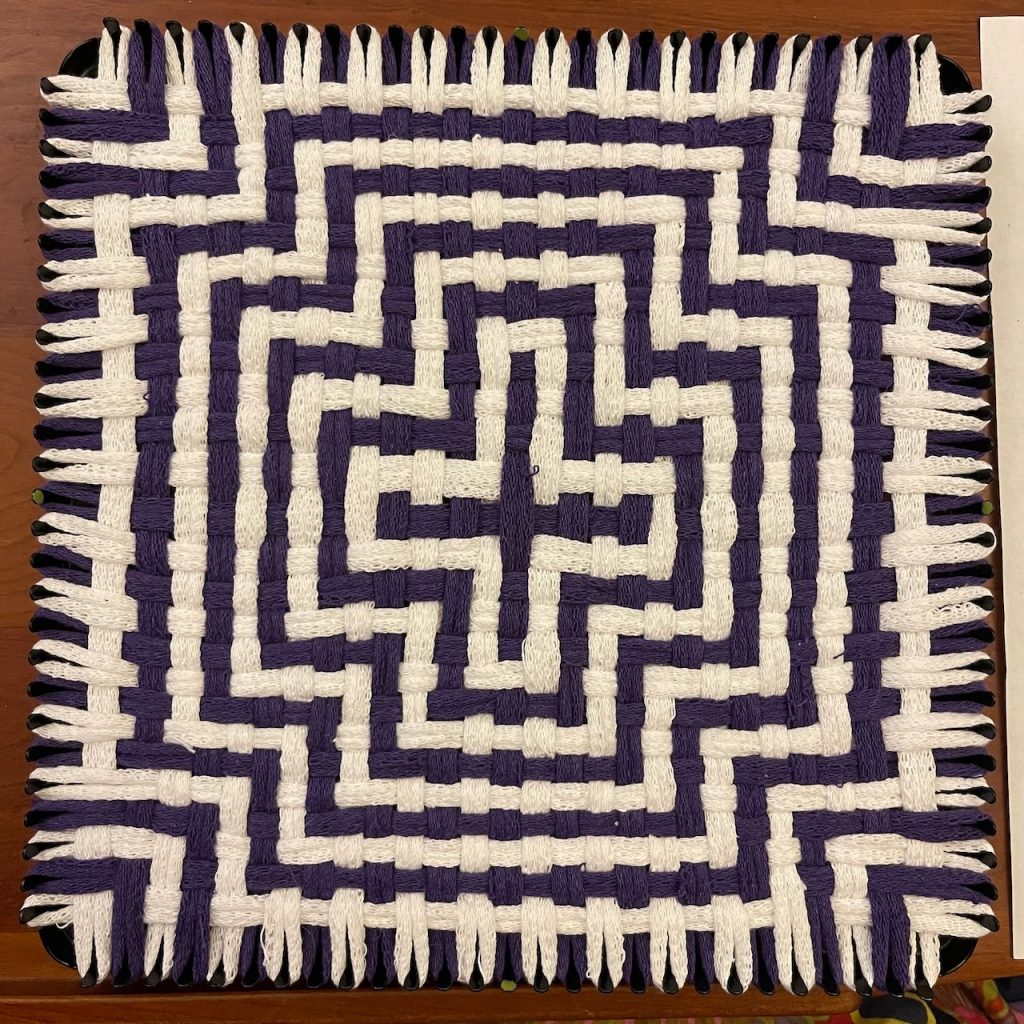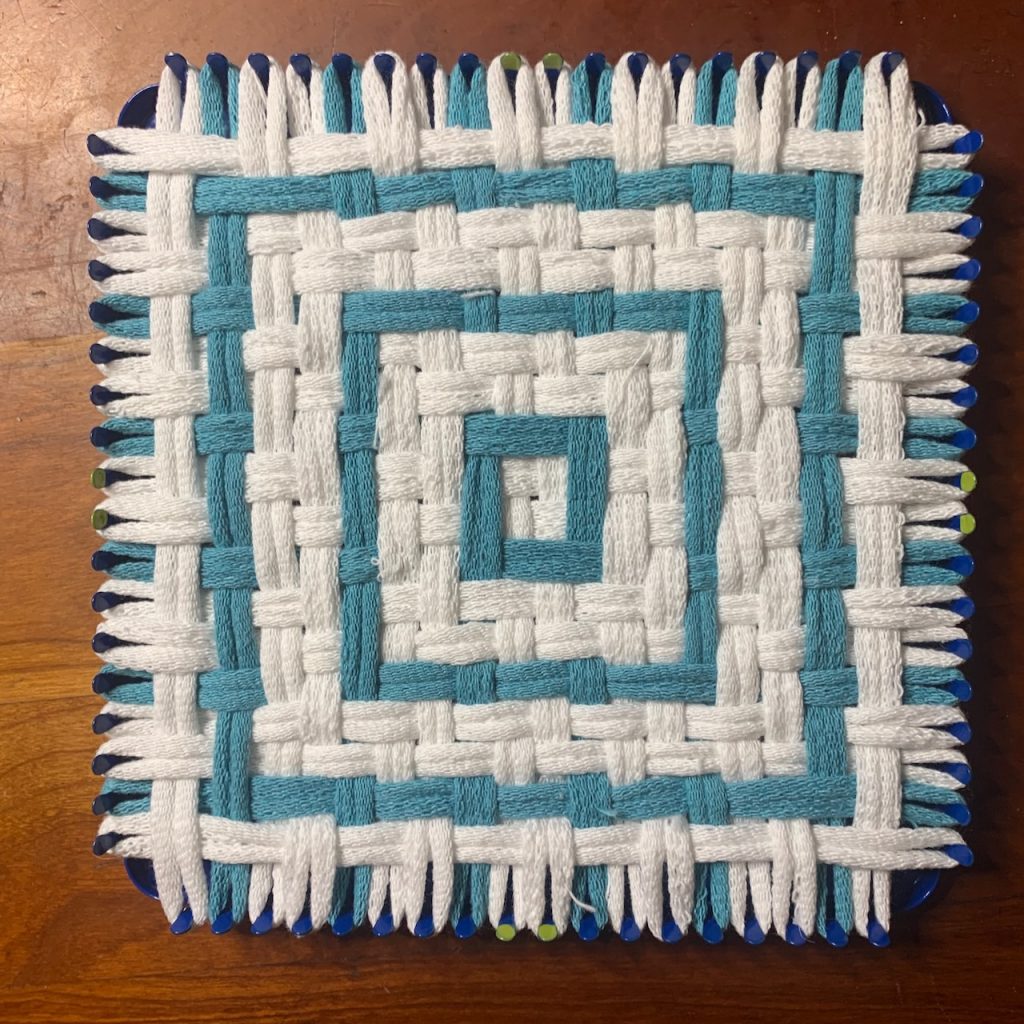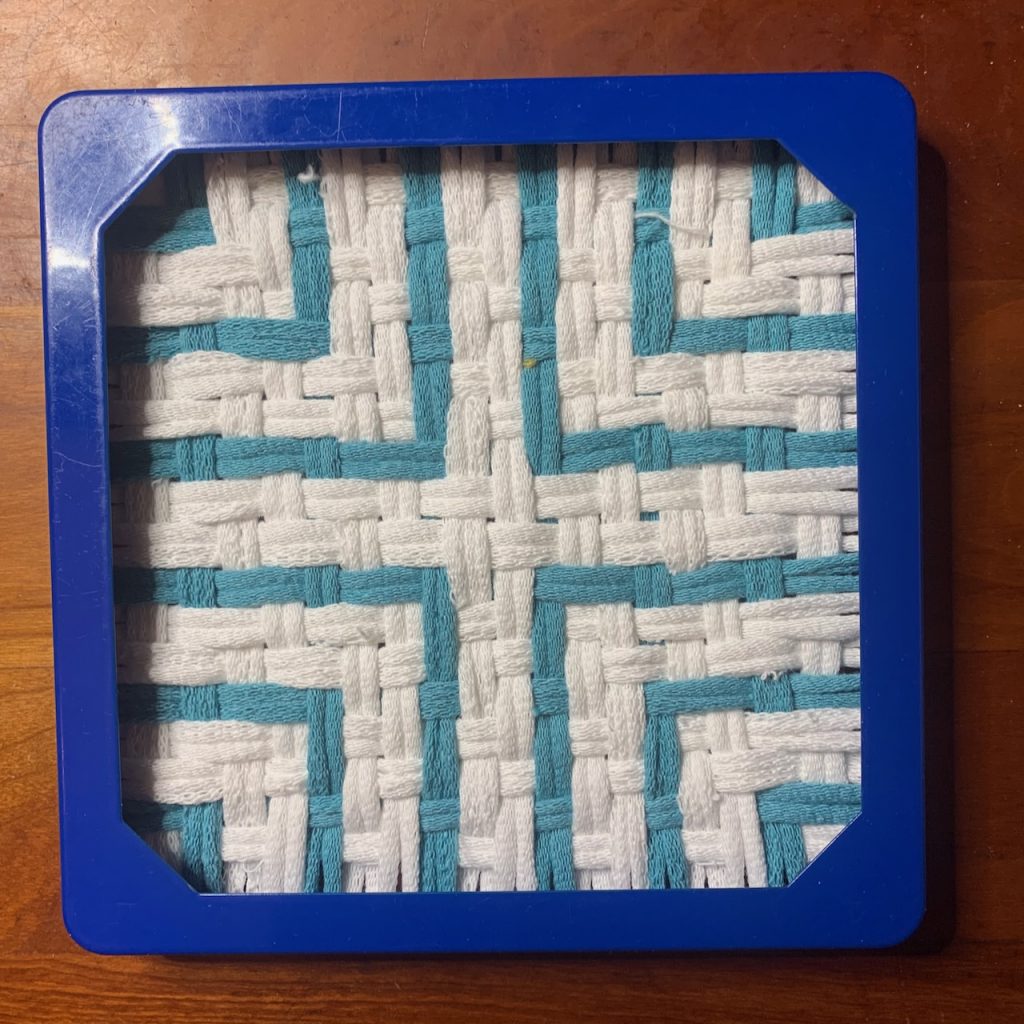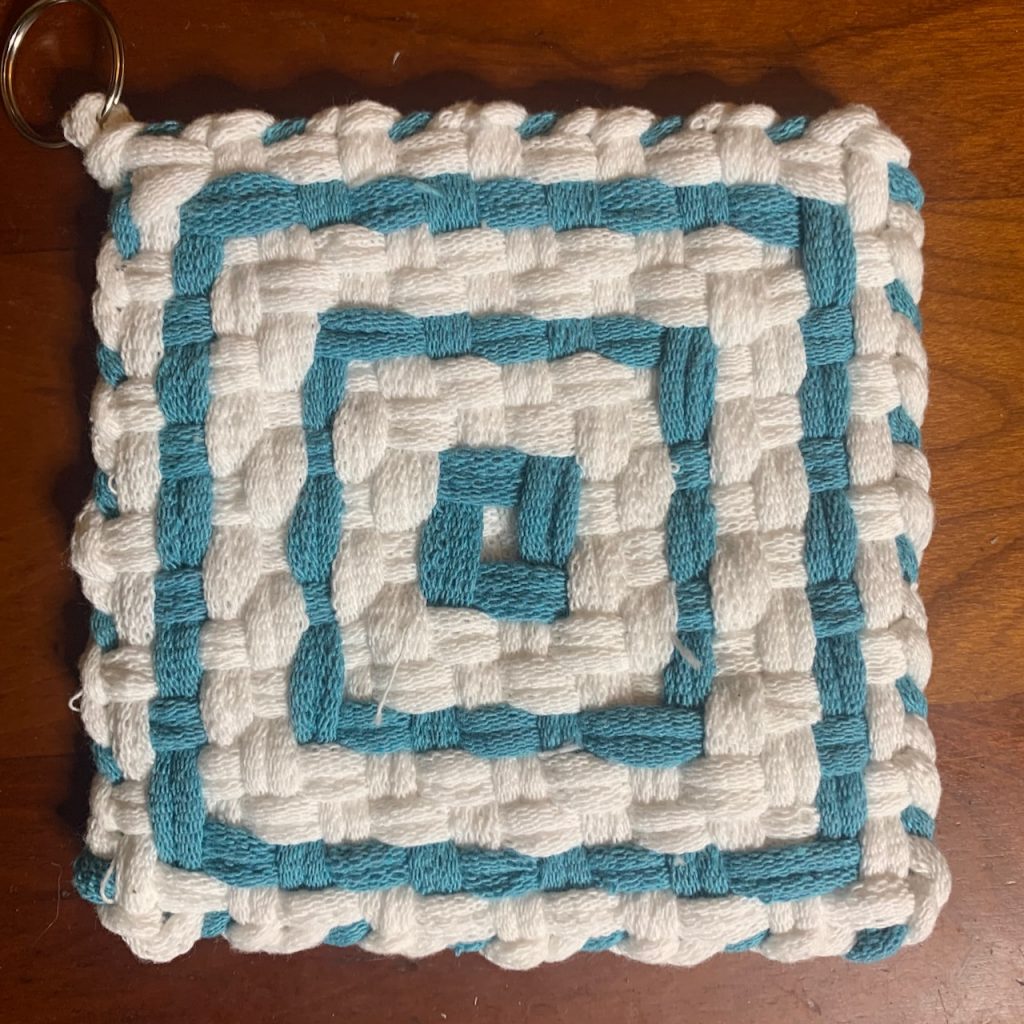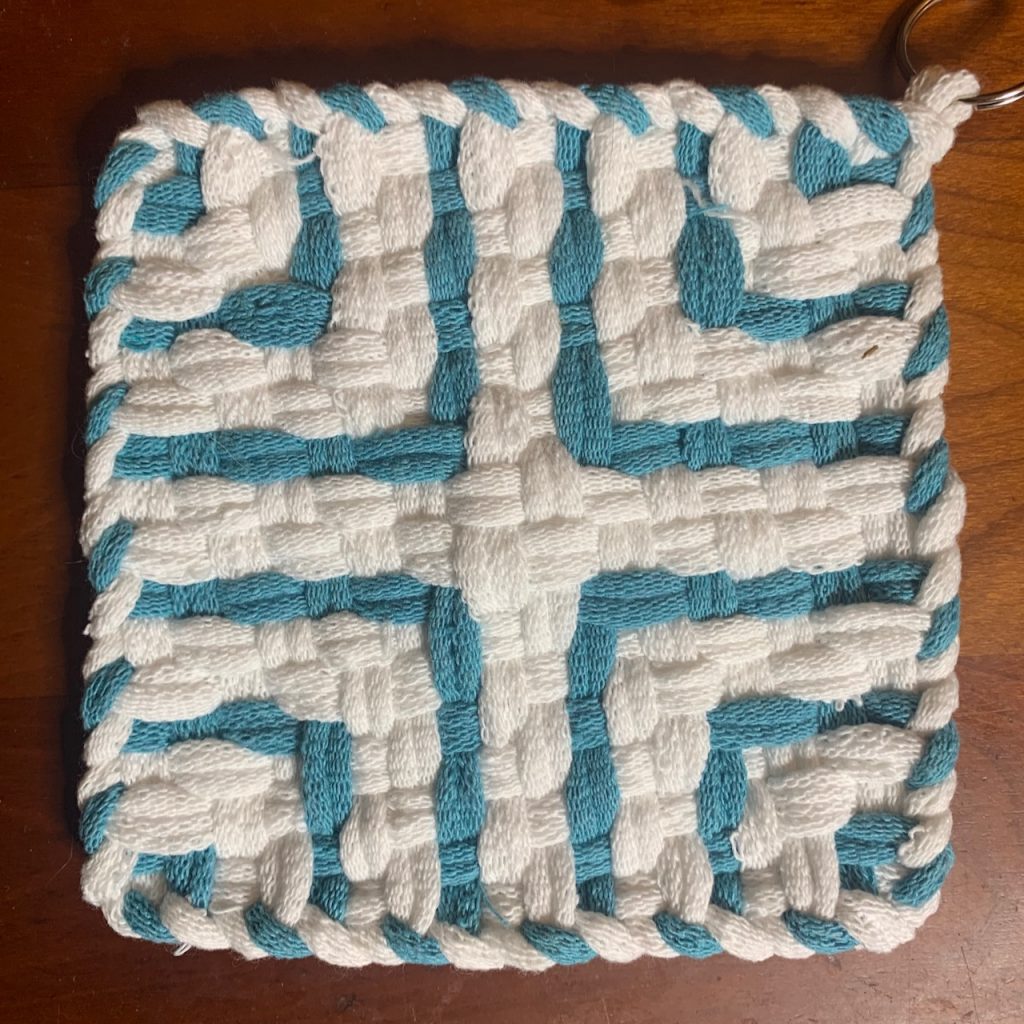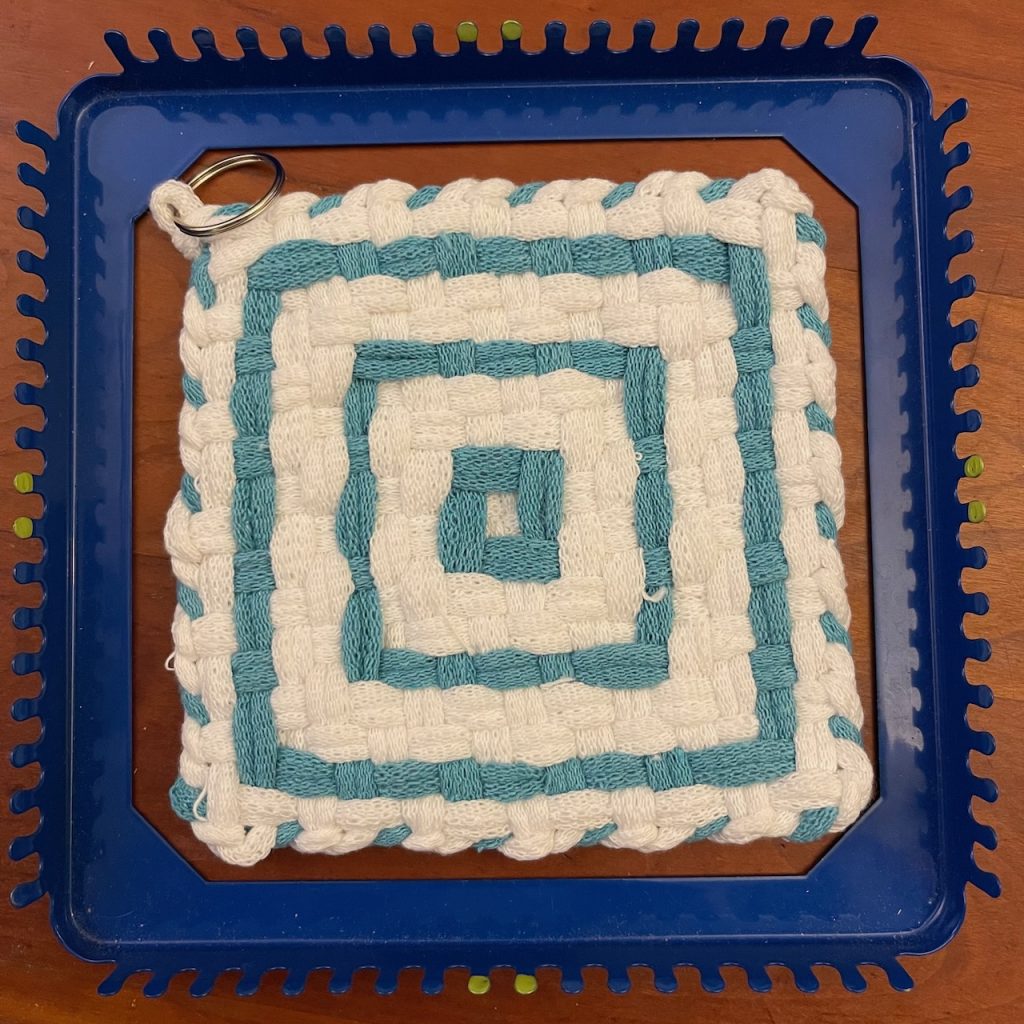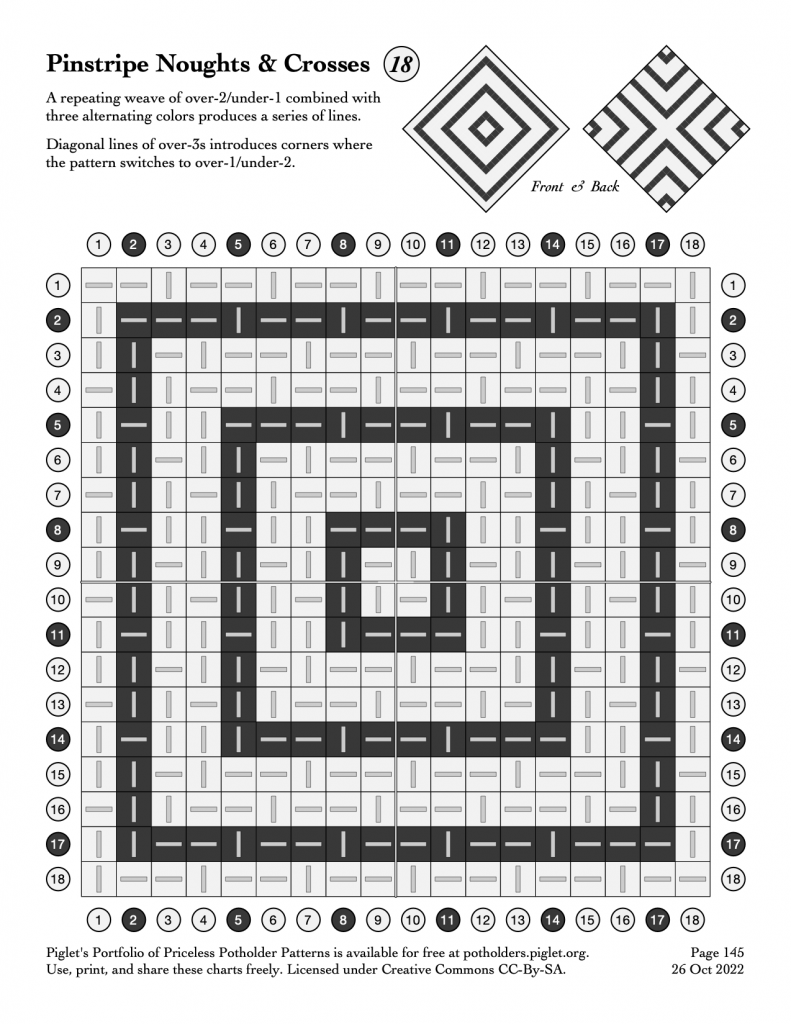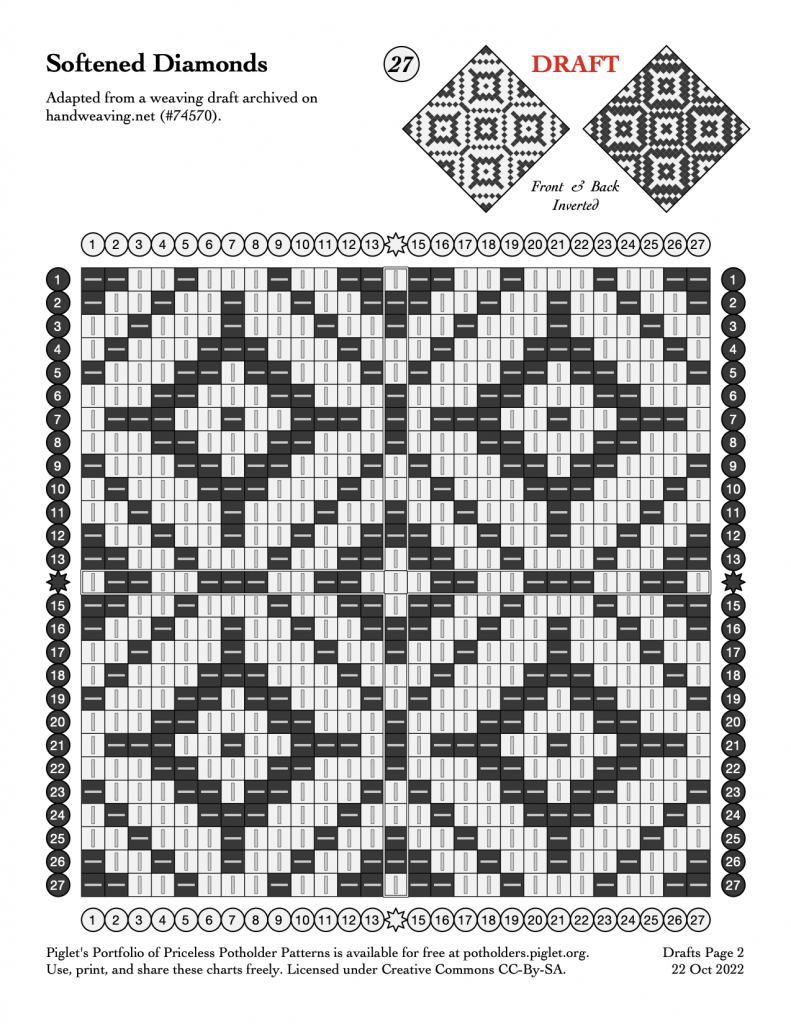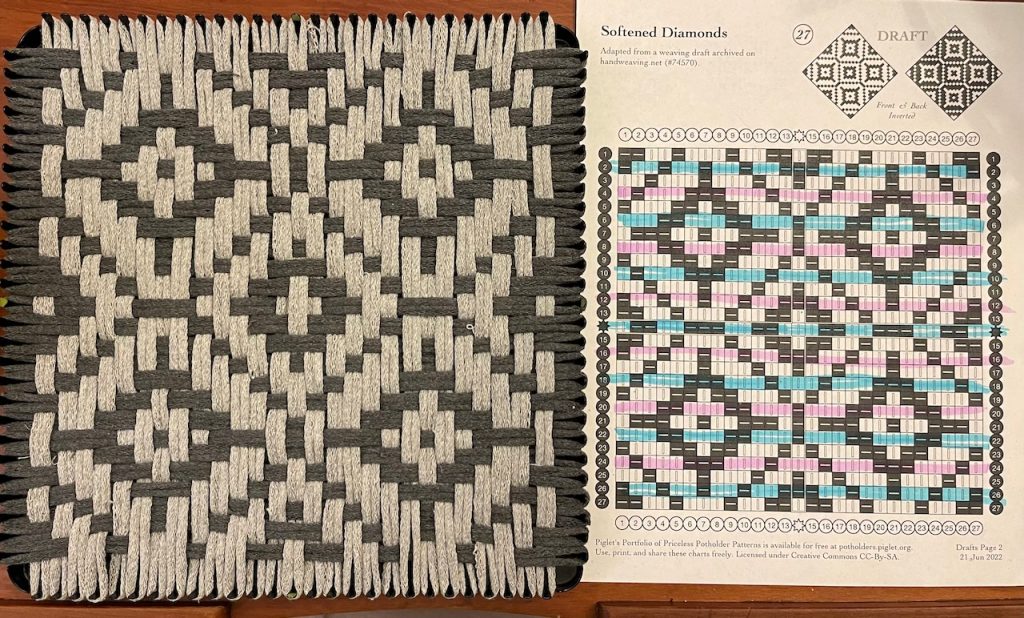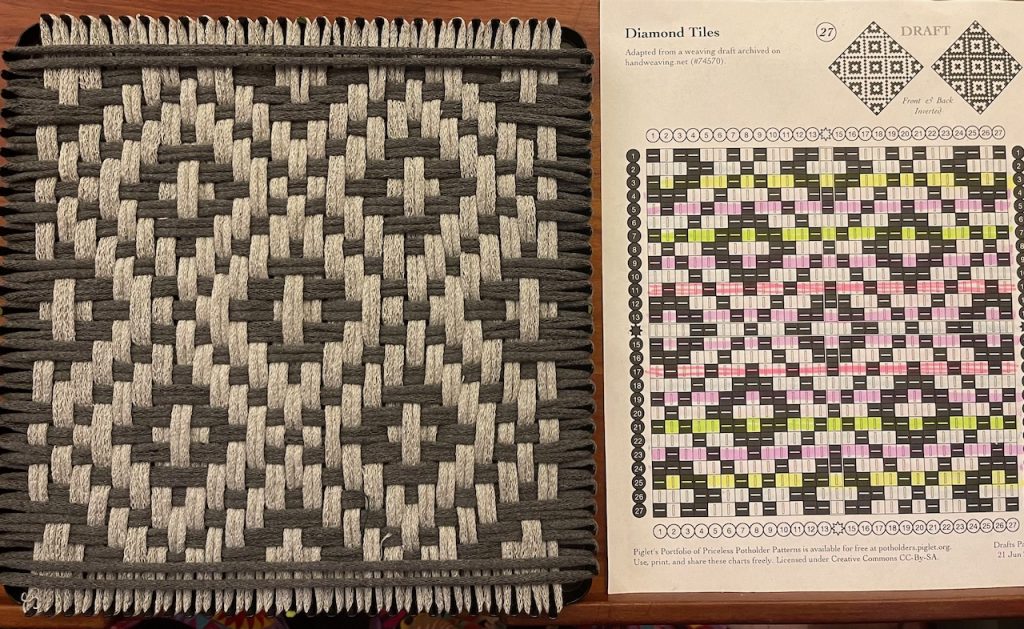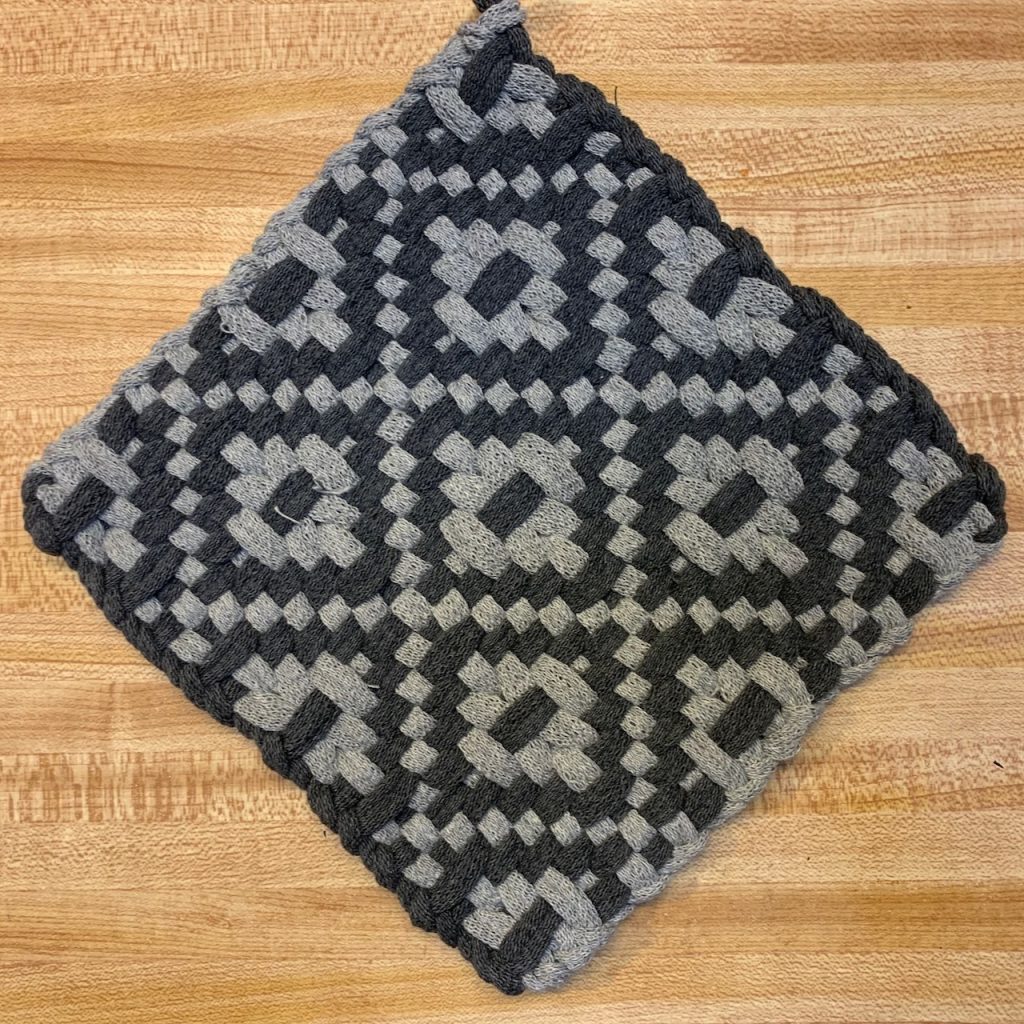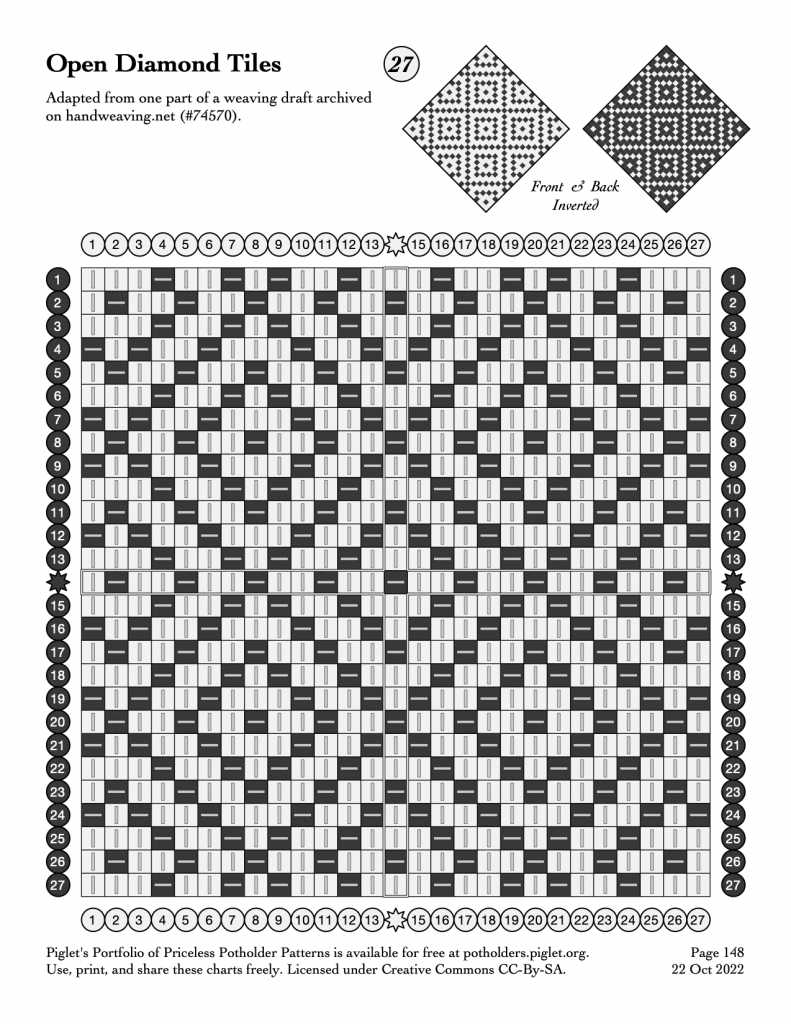Here’s another intersting weave that produces a highly-textured extra-thick fabric: “Three-Three Offset Twill.” (It’s so hard to come up with good names!)
Each row is woven over three/under three, but instead of each row shifting over by one pick as you would for regular three-three twill, here you alternate between shifting over two and then over three.
When taken off the loom, the fabric tightens in and puffs up as with three-three twill, but the alternating shift sequence creates extra-wide wales with distinct grooves between them.
The back side features the same design, with the grooves reversed to line up under the ridges of the front. The weft floats spread out on each face, leaving the warp mostly hidden.
I’m not sure the photos below fully capture the texture, but in person it’s quite dramatic, and the feeling in your hand is very different than a plain weave.
Piglet has woven some fun color variations of this fabric, but to start with here’s a simple two-color example, with a white warp and colored weft.



